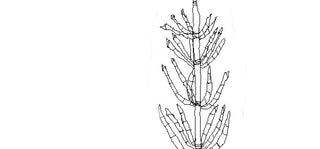Many of the plants that come to be subjects for a project are commonly considered to be weeds, and come from places where one doesn’t expect to find beauty. He takes plants from cracks in pavements, canal sides, local and ostensibly unimpressive parks; in fact, Nimki defines a weed as ‘a plant in the wrong place.’ He then pushes the plants into a context whereby they assume some relevance, rediscovered from folk tradition or newly imposed – creating a ‘right’ place – and thereby forces us to re-see the things we normally consider to be of no consequence. Past projects have included propagating weeds from seed – gifting labour and love to plants normally ripped from flowerbeds, rather than chosen for them – and making weed tea and wine. Nimki goes further than asking his audience to find beauty and worth in the invisible/nuisance by offering a means by which they can do so.

Share this article
Jacques Nimki
Jacques Nimki is a British artist who works with flowers and other plants. Each project of his begins with a site; Nimki starts by researching and walking an area to collect information, and ends by processing the plants he finds there into various artistic mediums. He is especially interested in the forgotten, the overlooked, and the tiny.

Jacques Nimki's 'Black Apoteca', 2015.
Nimki goes further than asking his audience to find beauty and worth in the invisible/nuisance by offering a means by which they can do so.

Jacques Nimki at Sharjah Biennial, 2007.
The cultural invisibility of the plants he draws into his art is cleverly mirrored in the practice itself. At Plinth's first pop-up, Nimki installed vinyl cut-outs of weeds, almost to scale, on walls of the same colour.
The cultural invisibility of the plants he draws into his art is cleverly mirrored in the practice itself. At Plinth's first pop-up, Nimki installed vinyl cut-outs of weeds, almost to scale, on walls of the same colour. In this way, even after processing and inspiring artwork, the weeds remain as unobtrusive and near-invisible as ever.
Nimki, in his statement of practice, explains that ‘all my works are florilegium… The original Florilegium (literally ‘flower book’) is a category of books from the seventeenth century, where images were more significant than text’. He explains that, at this time, flowers were being increasingly cultivated for their colours, forms and decorative qualities rather than their uses in medicine and cooking, as had been common before the form of the Florilegium became popular.

Jacques Nimki, 'Weed Wine,' Camden Arts Centre, 2004.
‘The picturing of plants in the form of a florilegium has no scientific purpose, no intent to analyse, classify or otherwise explore its subject, no text, and no argument, it was primarily a statement of possession, of ownership.’ Nimki’s own Florilegiums, then, reclaim the plants we call weeds from their history of obscurity, and gifts them the privilege of visibility and utility usually reserved for more conventionally beautiful flowers. Fads can apply to botany, and are just as arbitrary and unaccountable as any other fashion craze.